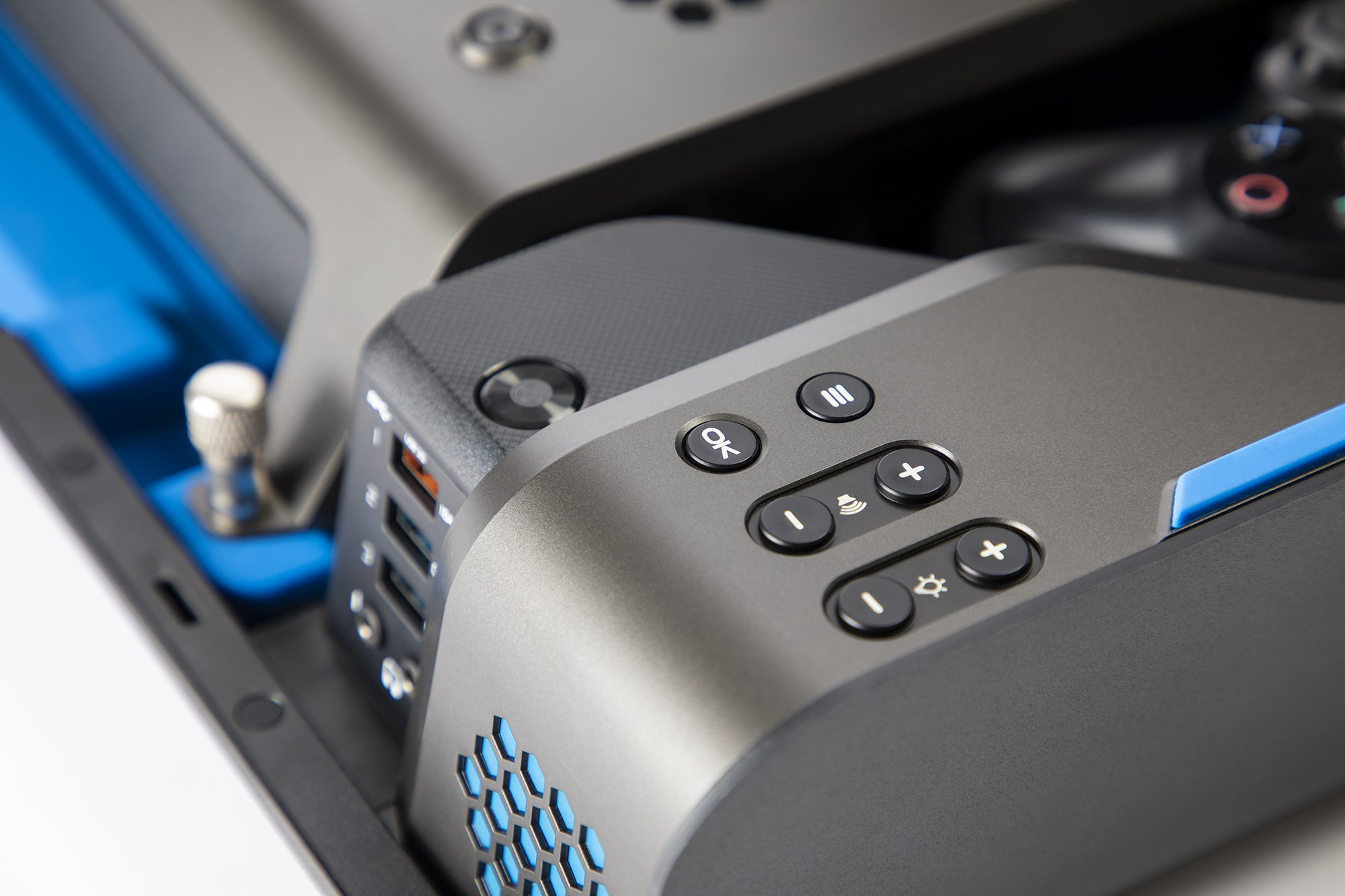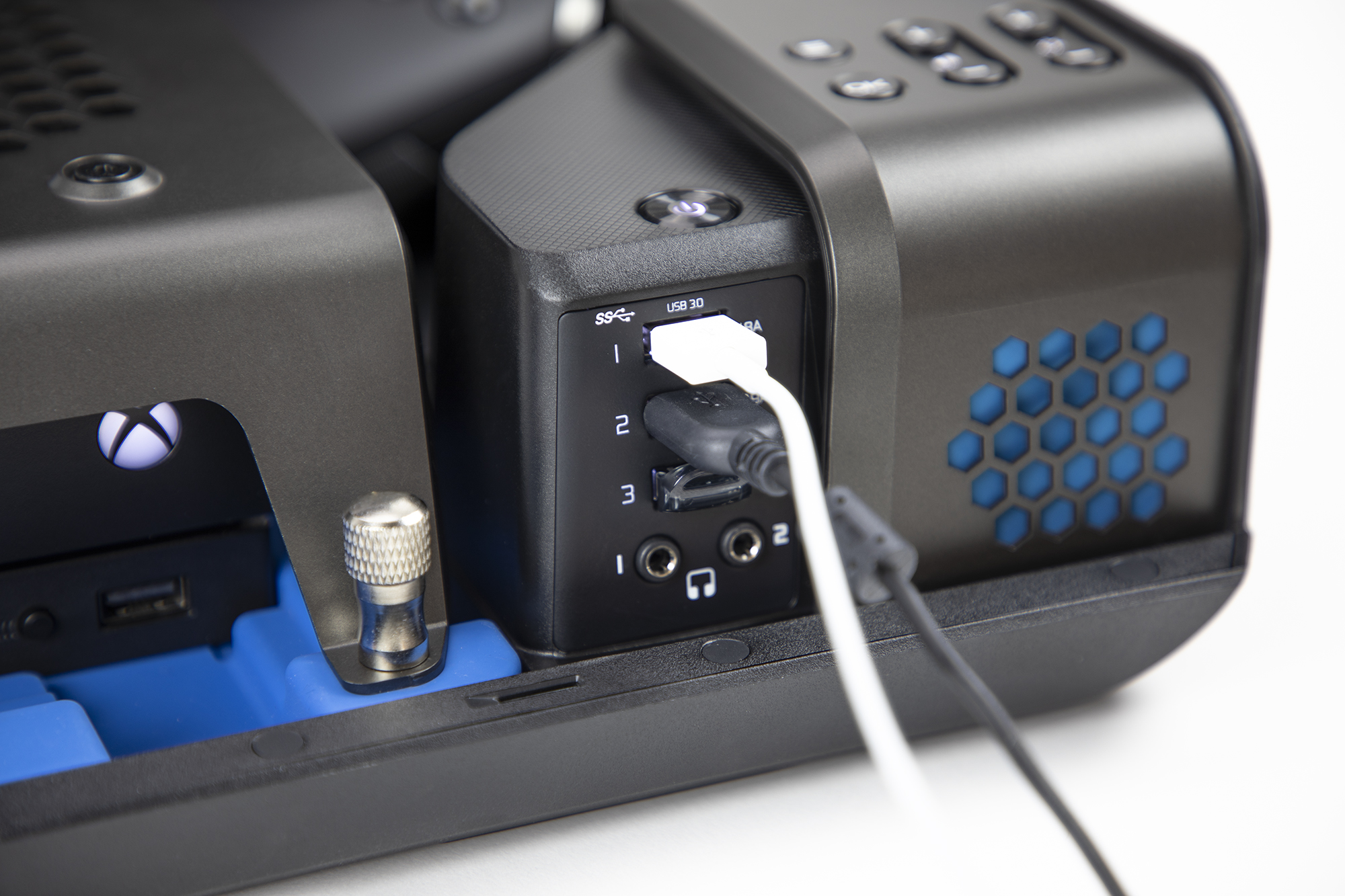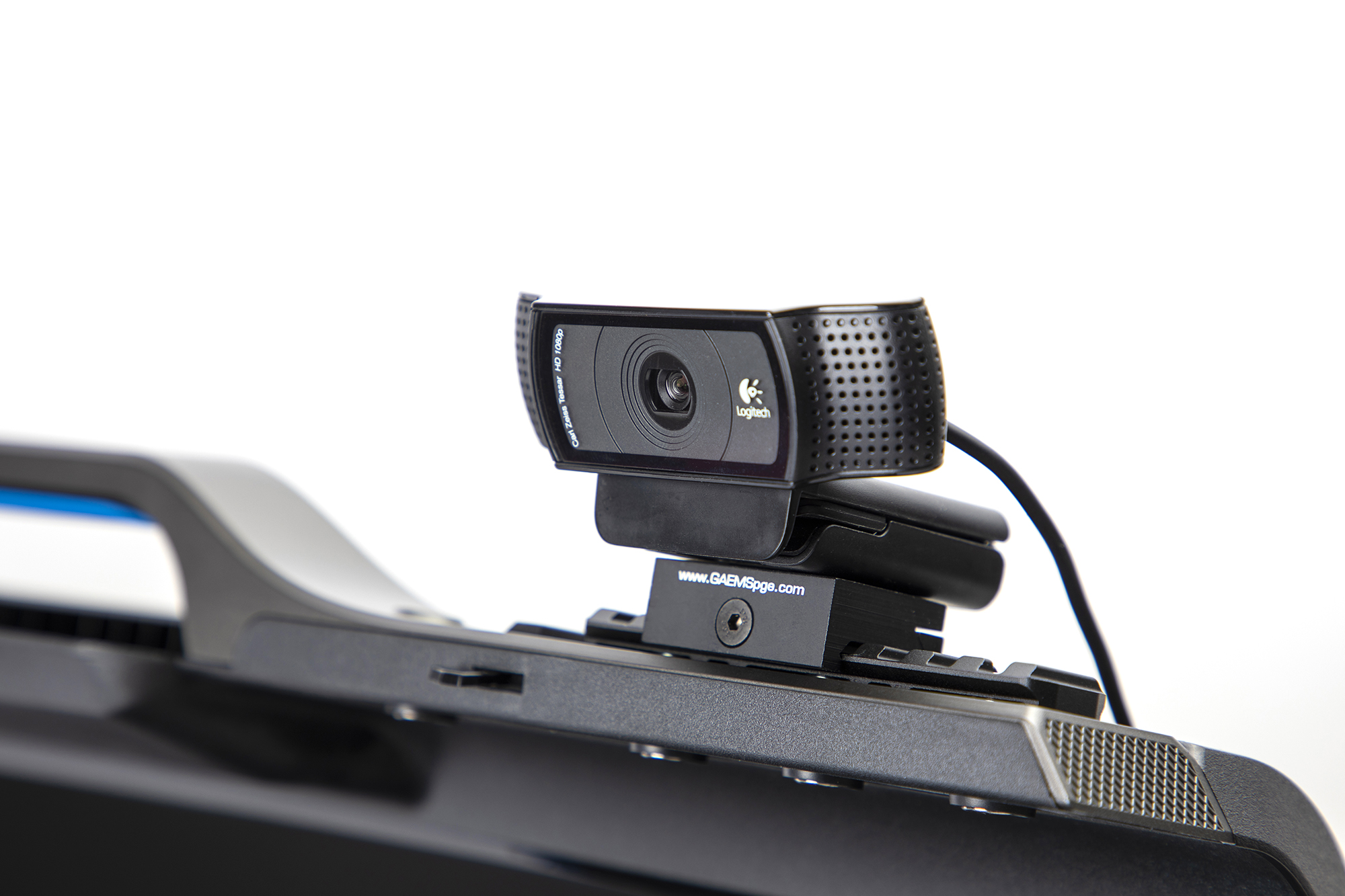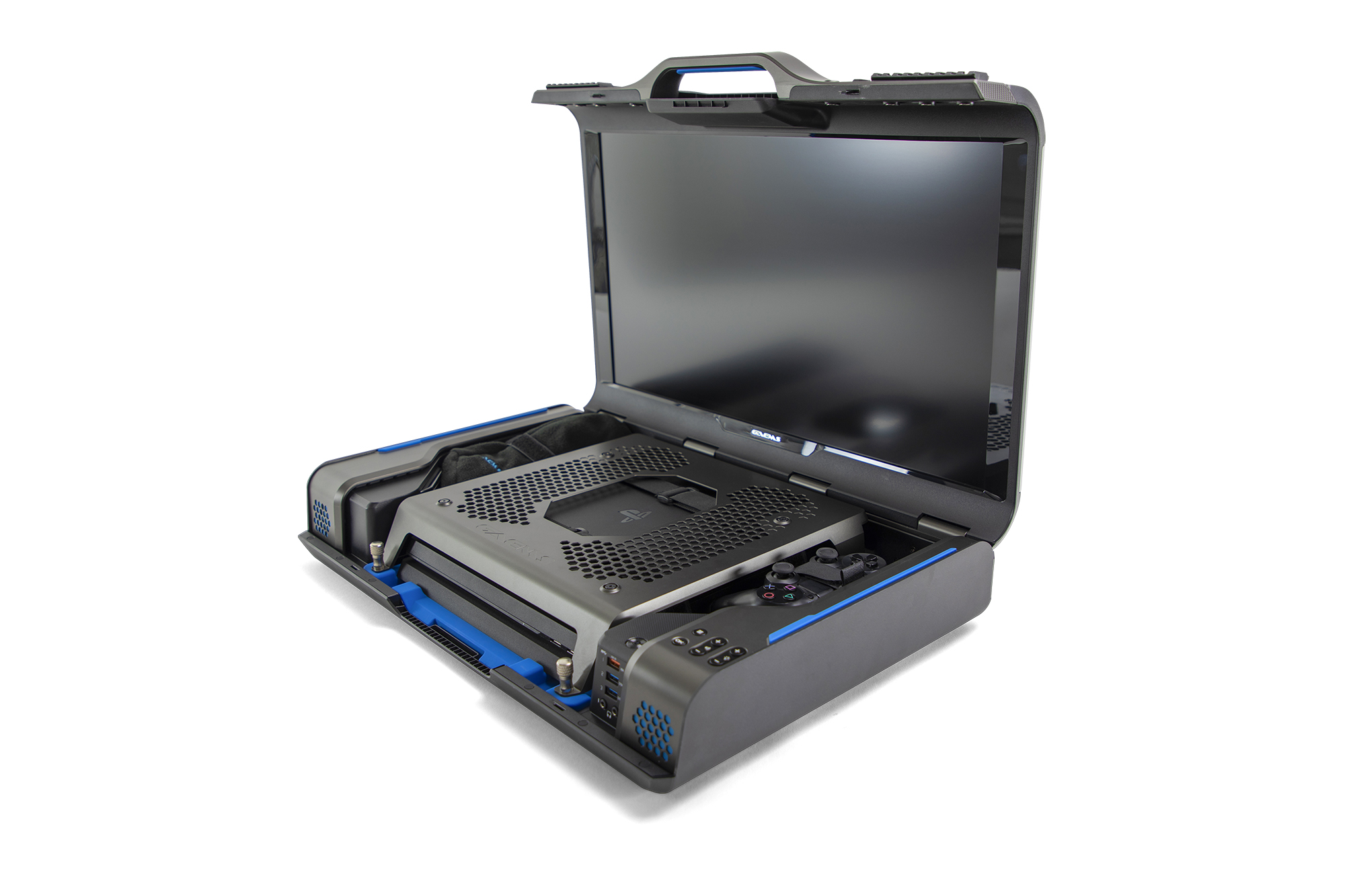This is Niche Gamer Tech. In this column, we regularly cover tech and things related to the tech industry. Please leave feedback and let us know if there’s tech or a story you want us to cover!
Back when the PlayStation 2 was the most popular system I bought quite a few travel LCDs to bring the system with me to events, as well as my friends homes. Throughout my time with them I owned a total of 4 that quickly resulted in inevitable breakage.
Even now, I look into some due to travel for work, especially now with convention season rolling around. While looking, I was not sure if it was timing or just a coincidence but I was asked to attend a demo for the newly announced Gaems Guardian, and left with a good a good understanding of the product.
To demo the screen quality we played Sekiro: Shadows Die Twice. The monitor resolution was displayed at its 2k (2560 X 1440) and 9ms response on hdmi. I was left with a great impression. The black and white balance was great and comparable to a high quality computer monitor.
I did not experience any issues or ghosting with the display itself and gave me a very smooth game-play experience. The 300nit brightness also made everything easy to see as well. As with any tv or monitor, settings can be adjusted as needed through the front panel.
The menu is straight to the point with what you can do with it. I did see a setting to switch between aspect ratios as well. It would be interesting to see the video quality on retro consoles using an upscaler if I had the equipment to do so. Power, volume and screen brightness are all controlled with a single button press near the front of the case.

The inputs of the case came in two sets, the first being on the front meant for the user, and inside the case dedicated for a console. The inside has a standard HDMI port for the visuals and a couple usb ports for the console. The usb ports are connected to the front ports and act as a hub.
Each front port is independently powered and sports a USB 3.0 1.8A and two USB 3.0 0.9A ports. During my time with it, I was told this design was chosen so anything compatible with the console could be used and also to ensure you can charge items, such as a mobile phone without any problem. Also, included on the front are one headphone audio 3.5 input and a microphone 3.5 input.
The case itself has two 9 watt front facing speakers and a 12 volt power amp. The audio quality sounded great, even in the somewhat noisy area we were in. The sub-woofers also had a nice punch to its bass, at full volume there was enough power to shake things on the table we were using for the demo.
I did not experience any buzzing or popping during my time. At extended periods of time I did not experience any degradation and was left very impressed and possibly others who turned their heads looking at our direction.

The case itself is built to protect its internal monitor and the console, and has a unique look compared to traditional flip top monitors that you attach to your console. The external is built out of a rugged plastic reinforced with metal braces.
The console its self is strapped into the case and is covered with a metal cage that you bolt down to one side of the case. To ensure a good fit, replaceable silicone rubber pads are placed around the base of the console as well. However, this device is only compatible currently with the Xbox One and PlayStation 4 lines of consoles.
Other additives to the case include areas to mount equipment near the handle, such as lights or cameras. While not really suited for any other use but streaming, it is an interesting addition most suitable focused around streamers and gears the product more to that core audience.
Hidden on the outside of the case is another HDMI out port to copy the monitor’s video to another screen. When asked I was assured there would not be any interruptions or delay using this additional feature.

Investigating the case did lead me to a couple concerns, more specifically on the side that houses the monitor. The case itself is well built, however, on poking the silver area on the external of the case I did feel some flexibility and it felt a bit weaker than the rest of the case.
A hard bump may have the chance to press on the monitor as could result in damage. Likewise, the hinges are built to hold the monitor upright, however as with many different products that do the same function how long will they last?
When I inquired about any type of drop test relating to these issues they assured me that the tests have been satisfactory. Gaem explained to me that they want to ship a product that lasts. This gave me some relief to my concerns but it would be a matter to see how it works over the test of time.

Even with how impressive the Gaems Guardian was I found myself asking if I really needed this? To be fair with what I experienced and was impressed by, my answer would be no. This is despite how often I travel around, and that it could have multiple different uses for myself from gaming to a secondary computer monitor.
The entire setup is a heavy investment at $700 USD. For my uses I may opt to get one of the previous models Gaems have released, such as the Vanguard or Sentinel. However, given the opportunity I would gladly take pick up one for travel use. In comparison, the Gaems Guardian would be useful for professional streamers on the go or eSports coordinators, especially when usability or functionality matters.
The screen, inputs, and the overall presentation of the Gaems Guardian are all impressive, however, it will all come up to the individual if this is what they are looking for in a travel monitor setup. If this is up your alley, the Gaems Guardian is up for pre-order now on indiegogo.